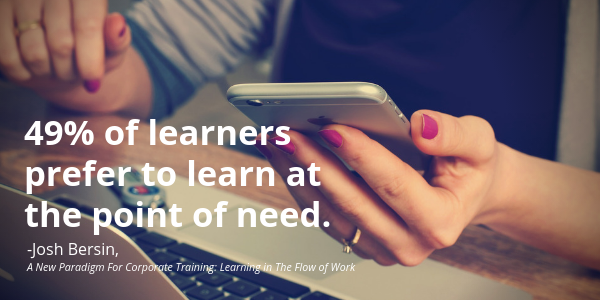In 2019, it’s a given that a diverse, inclusive workforce is a desirable goal for any organization. Diverse teams come up with better, more innovative ideas. Research shows that diverse groups produce measurably better output by drawing on the expertise and ideas of people from a wide range of backgrounds.
Unfortunately, inclusive and diverse work environments don’t materialize out of thin air—our natural unconscious biases tend to get in the way when left unchecked. That’s why many companies have implemented mandatory diversity and inclusion training. But do these training programs work?
Numerous studies are pointing to no. Some suggest they are ineffective, and some go so far to say as training programs are actively damaging to diversity efforts.
So, what does work? To answer that, we must understand the limitations of traditional diversity and inclusion training, which can usually be found in one of two areas: the failure to understand that cognitive biases are extremely difficult to root out, and the failure to recognize the need for ongoing education.
Fortunately, there are ways to address both.
The key to addressing cognitive bias: Focus on behaviors
The fact is, cognitive biases are difficult to address even if people receive training on them. Harvard sociology professor, Frank Dobbin, told Fast Company that the strength of cognitive biases is also its weakness. Human brains evolved to make quick, snap decisions. In ancient times, this process kept us alive, but in today’s business world it can lead to limited thinking and poor judgment.
A prime example of this is the belief that because we are good at our jobs, people similar to us will also be good at their jobs. Given that historically business was dominated by white males, this deep-rooted bias has perpetuated this demographic skew in most sectors, at every level, generation after generation.
Reprogramming that system takes finesse—confronting bias is difficult, especially since many cognitive biases encourage people to feel defensive, reject logic, and double-down on the bias when challenged on it. That’s why researchers like Peter Cappelli, management professor at Wharton’s Center for Human Resources, and Frank Dobbin suggest that companies should focus on behavior instead of thought.
By providing employees with action-oriented instruction on what they should be doing to avoid biased thinking, they can initially focus on simple behaviors. Here is an example from Blue Ocean Brain’s microlearning course Managing In-Group Favoritism:
Recognize the arbitrary nature of ingroup-outgroup distinctions. The example of motorists and pedestrians helps make this point clearly. You are in the in-group at one moment and in the out-group the next.
Now, take action: Expand your professional network to include individuals who think differently than you. Commit to inviting someone with whom you frequently debate to join your next project team. Take note of the breadth and quality of the ideas and decisions: did fresh ideas or new processes surface?
The learner isn’t asked to absorb broad concepts and go on their merry way a changed person, but is given a real-life analogy to bring relevance to the topic, then challenged to try one new behavior. It may seem small, but there’s a cumulative effect: down the road, with self-exploration and practice, different ways of behaving can lead to different ways of thinking.
The key to effective D&I programs: Continuous, reinforced education
Traditional D&I training has taken the one-and-done approach—an afternoon training lecture that barely scratches the surface—believing that some D&I training is better than none. In reality, it’s having the opposite effect. One Harvard study found that, with more than 800 companies and over 30 years, diversity training had “no positive effects in the average workplace.” At worst, diversity seminars can have the result of actually promoting prejudice.
Transforming into a culture of diversity and inclusion takes time. Our brains have learned to operate a certain way over our entire life, it won’t change after one seminar. Instead, effective D&I learning programs are continuous learning journeys. Each step of the journey delivers a new piece of information that builds on the last. Individual modules can be short and easily digestible, but the overall learning path delivers deeper learning.
A carefully curated learning journey with ongoing reinforcement—rather than a ‘brain dump’ of information that is almost immediately forgotten—allows for better understanding and retention.
It’s also important to develop a program where employees can easily “bump into” learning. If employees are given the opportunity to learn about cognitive biases at their convenience, they are less likely to respond with defensiveness.
A microlearning strategy empowers companies to deliver the type of long-term, ongoing D&I education that actually helps create cultural change within an organization. By providing continuous, bite-sized learning, companies can avoid the pitfalls of traditional trainings and better create a more diverse and inclusive workforce.





